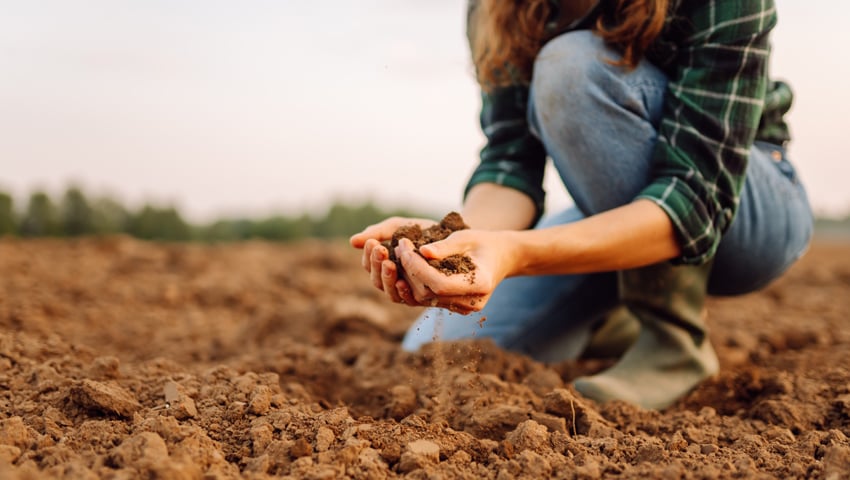A multi-institutional study led by University of Illinois and Agroecosystem Sustainability Center (ASC) scientists concluded that, although soil moisture varies significantly both within a single field and from field to field due to varying soil properties and different management practices, soil moisture distribution relative to the field average remains consistent across time within each field.
Over three years, the team used sensor measurements and a high-density campaign to reveal that the drier areas remain the drier areas and the wetter areas remain the wetter areas. The study also deduced this finding, reliable estimations of high-resolution soil moisture could be made by integrating optical and active microwave remote sensing, and modeling, instead of relying on infield measurements.
“Our ultimate goal was to improve our understanding of soil moisture variability,” said principal investigator Bin Peng, an ASC scientist and an assistant professor in the Department of Crop Sciences. “We wanted to understand the controlling factors of those variabilities and how those variabilities can be reflected in satellite remote sensing data.”
“The current satellite-based soil moisture products are too coarse to meet the requirements for agricultural applications,” said Yi Yang, the study’s first author and a doctoral student in computational ecohydrology. “We found that the spatial pattern of soil moisture variability is not changing over the season. In other words, drier areas tend to stay drier and wetter areas tend to stay wetter. We can use this knowledge to estimate the pattern of the spatial variability of soil moisture, and then estimate high-resolution soil moisture products.”
The research team conducted field campaigns in three 85-acre fields and set up continuous field stations in 30 other fields from 2021 to ’23. Their results were published in the Vadose Zone Journal.
Yang said, “Most of our efforts were to improve our understanding of soil moisture variability using field experiment data, and we are also striving to test if our improved understanding can really be useful for remote sensing retrieval.”
He noted that taking regular field measurements is too expensive, too labour intensive and not easily scalable.
“We can get the relative dry-wet pattern within a crop field through optical remote sensing,” Peng said. “Therefore, you don’t have to go to the field and replicate the data collection. Our experiment confirmed that because the relative pattern is stable, once you get two or three images from optical satellite sensors to confirm the wetter and drier pattern, you can fill in the temporal gap. This opens a new pathway for high resolution remote sensing retrieval.”
Peng said the study provides a roadmap for studying soil moisture variability in cropland, which until this point had been lacking both measurement and reliable remote sensing capabilities. That pathway combines optical remote sensing data with shortwave infrared spectral bands, active microwave remote sensing, and modeling. High-resolution soil moisture data will be valuable to the farmer for more precision irrigation. It could also be used to understand greenhouse gas emissions or carbon intensity of agricultural production, which are closely related to soil oxygen and water conditions as they directly affect biochemical reactions and microbial activities.
“We should build upon the knowledge discovered here to develop a high-resolution soil moisture product,” Guan said. “We laid out our roadmap for mapping high resolution soil moisture over cropland using multi-source satellite remote sensing and modelling data. The first stream of information gives within field soil moisture variability, and then the second stream gives the absolute soil moisture temporal changes. We can then integrate them with modeling to map every field across the Midwest or even across the globe.”
